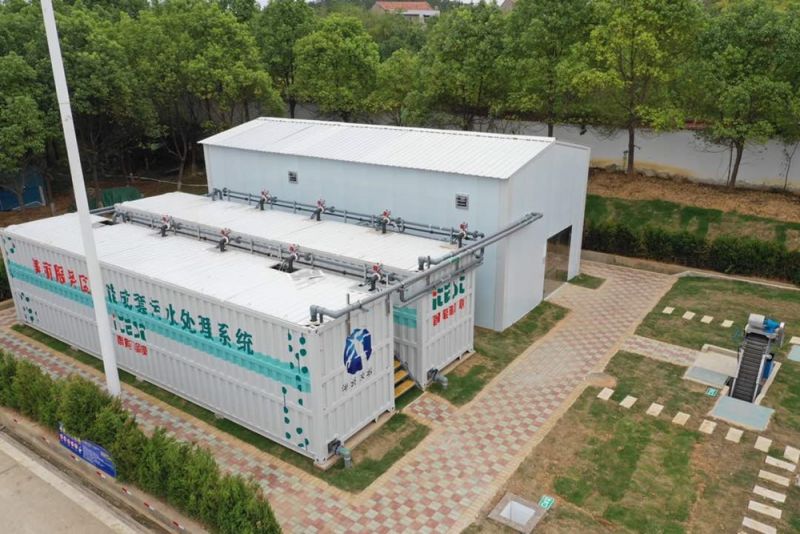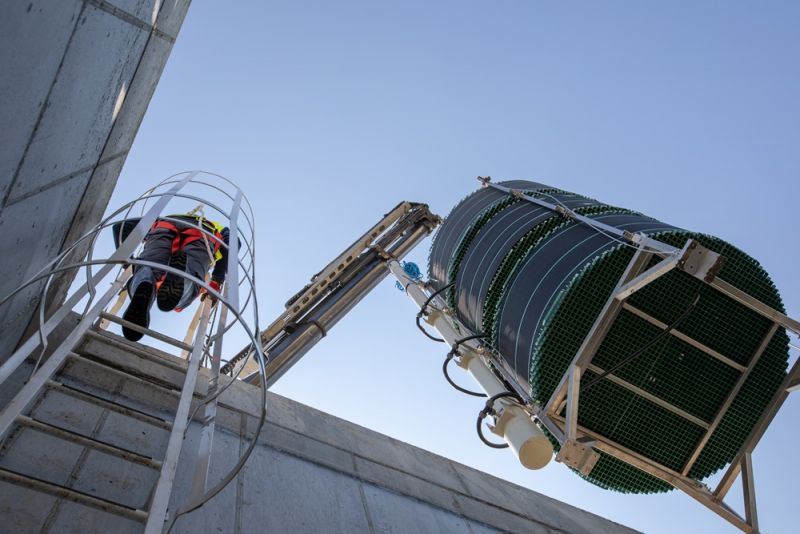Q&A on Membrane Aerated Biofilm Reactor (MABR) with Fluence
Published on by Laura Silvello, Marketing Manager, Italy Operations at Fluence Corporation in Technology
Uriel Klar , Business Analyst of Fluence Corporation, explains MABR technology and Fluence latest products.
Please describe the MABR technology
Membrane Aerated biofilm reactor (MABR) is a biological wastewater treatment process that utilizes passive aeration through oxygen-permeable membranes. The MABR aeration process is the most efficient oxygen delivery system for treating domestic wastewater. The passive oxygen transfer mechanism, which requires air supply at very low pressure, is the reason that MABR has significantly lower energy consumption compared to other conventional treatment processes that utilize energy-intensive equipment.
The MABR modules are submerged in a wastewater treatment tank to continuously provide oxygen, which supports the formation of aerobic biofilm on the membrane’s surfaces. Under suitable operating conditions, the biofilm and the surrounding suspended solids perform simultaneous nitrification and denitrification (SND). This unique process allows MABR to reach very low Total Nitrogen (TN) levels of less than 3 mg/l and enables up to 90% removal of Total Phosphorus (TP).
The energy efficient process and the ability to perform SND with minimal chemical addition or operator intervention are key reasons for the MABR rising popularity across multiple countries.

What are SUBRE and Aspiral products?
Aspiral is a containerized smart package plant configuration that was specifically designed for the decentralized wastewater treatment market. Decentralized treatment has a growing market demand from new housing developments, resorts, small towns, schools, and high-tech parks.
Aspiral system is a plug and play solution for wastewater treatment in a 20-foot or 40-foot marine container. Each tank contains 1-5 MABR spiral modules, and multiple containers can be installed in parallel to treat higher capacities. It is typically selected for treating sewage for small communities of up to 10,000 people. Depending on the configuration required and the scope of supply, it takes 2-5 days to install and start up an Aspiral system. Due to its’ high treatment efficiency, the Aspiral system has a small footprint compared to conventional wastewater treatment package plants. Aspiral can achieve simultaneous nitrification and denitrification in one pass, without internal circulation. The system can be remotely monitored and controlled to further save on operator cost and improve operating efficiencies. Aspiral systems are already installed or under construction in China, Africa, Israel, Philippines, South America and the US.
SUBRE is an MABR product designed for retrofitting existing wastewater treatment plants. SUBRE provides two different retrofit options: increasing the plant’s capacity by up to 30% while keeping the same effluent quality or improving the effluent quality to meet more stringent nitrogen and phosphorus requirements. In addition, SUBRE reduces aeration energy consumption and chemicals consumption by up to 30%. The SUBRE design principle is adding nitrification capacity within the existing anoxic zone with zero additional footprint. A first full-scale commercial SUBRE installation is currently in its’ final stages in a WWTP in Israel.

What are the benefits of decentralized wastewater treatment?
In a world of aging wastewater treatment infrastructure, population growth, intensive new peri-urban developments, and expensive wastewater infrastructure – decentralization is the most economically viable solution. Aspiral smart package plants can be quickly deployed anywhere in the world to provide high-quality wastewater treatment with minimal installation time. Multiple Aspiral systems can be installed in multiple housing communities of one city to create a network of wastewater treatment and local reuse systems. Aspiral requires low operator attention and low maintenance, they exert no odors, and produce reuse quality effluent that can be reused for toilet flushing and irrigation. On-site reuse approach eliminates the need for laying long pipelines to a centralized plant and back. There are communities in the US, Europe, and China that have already embraced this concept, which is expected to grow over the next years. In China, for example, the government has declared that 70% of the existing villages in the country will install wastewater treatment plants based on this concept. Fluence is at the leading edge of the decentralized wastewater treatment growth in China with Aspiral system installations across the country.
Can you tell me about Fluence’s global activity?
Fluence brings together breakthrough water-treatment technologies and proven delivery platforms to optimize the water cycle for the 21st century, providing the middle market with local, sustainable, and fast-to-deploy water and wastewater treatment and reuse solutions, empowering businesses, and communities worldwide to make the most of their water resources. With headquarters in New York, Fluence has a global staff of over 300 highly trained water professionals, and more than 7,000 references in 70 countries worldwide. Fluence has ongoing operations in a dozen countries, with core operations in North America, South America, the Middle East, Europe and China.
The article was submitted by Fluence Corporation.
Media
Taxonomy
- Aeration
- Decentralized Wastewater
- Membrane Bioreactor Systems
- Waste Water Treatments
- Membranes
- Wastewater Treatment
- Environment Evaluation